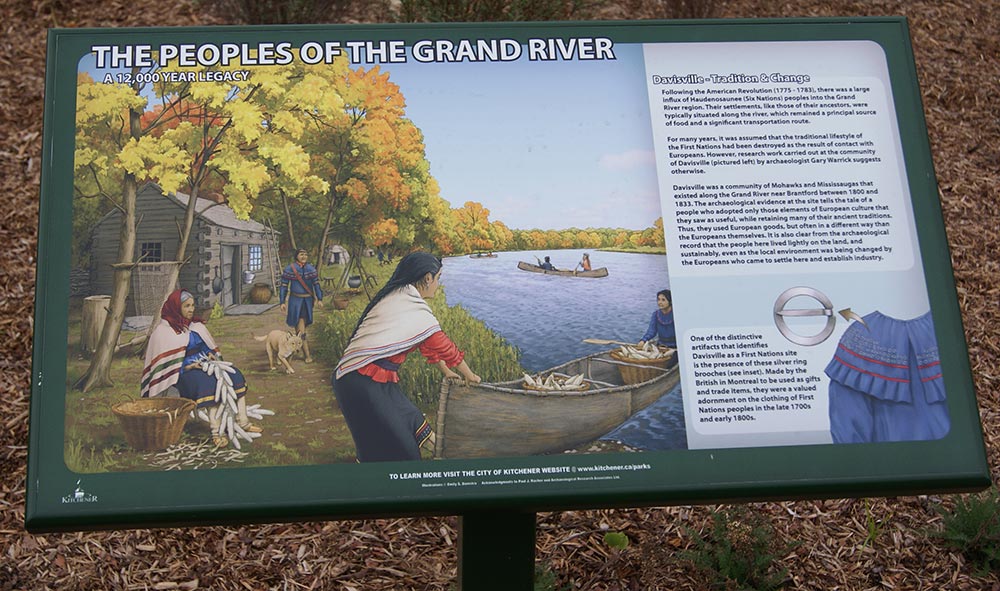The City of Kitchener recently installed two new interpretive signs along the Grand River Walter Bean Trail near Kitchener’s Doon Valley Golf Course. (The nearest access point is the golf course parking lot. To see the signs, head west along the clearly marked trail until you cross the river over the new iron bridge).
These signs feature illustrations I completed earlier this year. One sign (below) is about a settlement of Mohawk and Mississauga peoples along Ontario’s Grand River in the early 1800s. The main illustration shows women returning from their agricultural fields, located across the river from their homes. Included in the lower right corner of the sign is an illustration showing one of the artifacts archaeologists found at the site – a silver ring brooch – and how the brooch might have been used. As the text on the sign reads, “The archaeological evidence at the site tells the tale of a people who adopted only those elements of European culture that they saw as useful, while retaining many of their ancient traditions.”

Interpretive sign along the Walter Bean Trail – the Davisville settlement, illustrated by Emily S. Damstra
The other sign (below) shows a more hypothetical settlement along the flats of the Grand River roughly A.D. 500 to 1000. Archaeologists named this culture “Princess Point” after the location in Ontario where the first evidence of this culture came to light. The main illustration shows a family in the midst of their daily activities on a late September day.

Interpretive sign along the Walter Bean Trail – a Princess Point settlement, illustrated by Emily S. Damstra
At the sign’s lower right are two illustrations of artifacts found along the Grand River not too far from where the signs are – a projectile point (see previous post) and a large pot. Archaeologists found the pot in pieces and painstakingly glued the pieces back together. Below is a photo of the reconstructed pot; I was fortunate to be able to borrow it for a while in order to illustrate it. What’s interesting about this pot – in addition to its beautiful form and extensive ornamentation – is that the people who made it so long ago repaired the pot after it broke in two. They must have valued it enough to drill holes in a few places so they could bind the pieces together with twine. Unless they filled the holes and cracks with some sort of pitch, it seems the pot would only have been used to hold dry goods. It is an impressive 38.5 cm tall.
2 Comments
Comments are closed.


Congratulations, Emily! Your illustrations are beautifully done and it must be neat to see them out in public where they can inform and educate.
[…] View this earlier post for more information about the illustration and how it was used. I created the image using graphite and digital color. […]